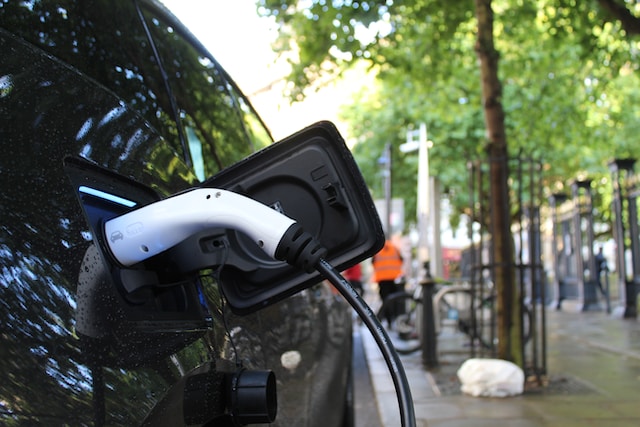In recent years, the automotive industry has witnessed a remarkable shift towards sustainable transportation solutions. As the world strives to reduce greenhouse gas emissions and combat climate change, electric vehicles (EVs) have emerged as a promising alternative to their fossil fuel-powered counterparts.
However, the widespread adoption of EVs requires an efficient and convenient infrastructure for charging. Enter the electric vehicle charging pile – a critical component of the EV ecosystem. In this blog post, we will delve into the world of electric vehicle charging piles and explore their significance in shaping the future of mobility.
Understanding Electric Vehicle Charging Piles:
Electric vehicle charging piles, also known as charging stations or points, are dedicated installations that supply electricity to charge EV batteries. They serve as the bridge between EV owners and the power grid, enabling a seamless charging experience. These charging piles come in various forms, ranging from home charging stations to public charging stations strategically located at key destinations such as parking lots, shopping centers, and highways.
- Types of Electric Vehicle Charging Piles:
a. Level 1 Charging:
Level 1 charging refers to the basic charging method that utilizes a standard household electrical outlet (120 volts). While it is the slowest charging option, it is most commonly used for overnight charging at home. Level 1 chargers are cost-effective and do not require any additional infrastructure investment.
b. Level 2 Charging:
Level 2 charging operates at 240 volts, requiring a dedicated charging unit installed at home or in public spaces. These chargers provide faster charging times compared to Level 1 and are ideal for workplaces, parking lots, and other locations where vehicles spend a significant amount of time.
c. DC Fast Charging:
DC Fast Charging, also known as Level 3 charging, offers rapid charging times by directly converting AC power to DC power. These charging stations are typically found along highways or in high-traffic areas and can charge an EV battery from 0 to 80% in as little as 30 minutes. DC Fast Charging requires specialized equipment and is designed for long-distance travel and quick top-ups.
Benefits of Electric Vehicle Charging Piles:
a. Convenience and Accessibility:
The availability of a robust charging infrastructure is crucial for the widespread adoption of EVs. Electric vehicle charging piles provide EV owners with the convenience and peace of mind, knowing that they have reliable charging options. With an extensive network of charging stations, EV owners can confidently embark on longer journeys without the fear of running out of battery power.
b. Environmental Sustainability:
One of the primary drivers behind the shift to electric vehicles is the aim to reduce greenhouse gas emissions. Electric vehicle charging piles enable EVs to tap into renewable energy sources, such as solar and wind power. By charging EVs with clean energy, we can significantly reduce carbon emissions, contributing to a greener and more sustainable future.
c. Cost Savings:
Electricity is generally cheaper than gasoline or diesel fuel, resulting in potential cost savings for EV owners. Charging an EV at home or utilizing public charging stations can be more economical in the long run compared to conventional fuel-powered vehicles. Additionally, governments and utility companies often provide incentives and discounts to encourage EV adoption, further reducing the cost of charging.
Challenges and Solutions:
a. Range Anxiety:
Range anxiety, the fear of running out of battery charge with no available charging stations nearby, is a common concern among potential EV buyers. To address this, governments, businesses, and individuals must collaborate to establish a dense network of charging piles in urban, suburban, and rural areas. Ensuring convenient access to charging stations will alleviate range anxiety and boost EV adoption.
b. Standardization:
Standardization of charging protocols and connectors is vital for interoperability and ease of use. The establishment of global standards, such as the Combined Charging System (CCS) and CHAdeMO, enables different EV models to charge at any compatible charging pile. Standardization promotes a seamless charging experience, regardless of the EV brand or charging station used.
c. Scalability:
As the number of EVs on the road continues to grow, scalability becomes a critical challenge for charging infrastructure. Investment in the expansion of charging pile networks, the deployment of high-capacity chargers, and the integration of smart grid technologies will be crucial to meet the increasing demand for charging services.
Conclusion:
Electric vehicle charging piles are the backbone of the EV ecosystem, providing the necessary infrastructure to support the mass adoption of electric vehicles. Their convenience, accessibility, and environmental sustainability make them an essential component of the future of mobility.
As technology advances and the charging infrastructure continues to expand, electric vehicle charging piles will play a vital role in reducing emissions, decreasing dependence on fossil fuels, and driving us towards a cleaner and more sustainable transportation future.
